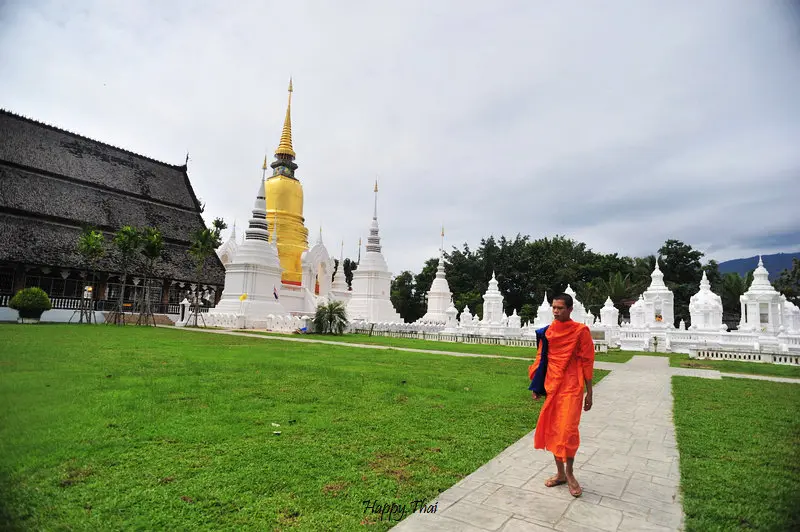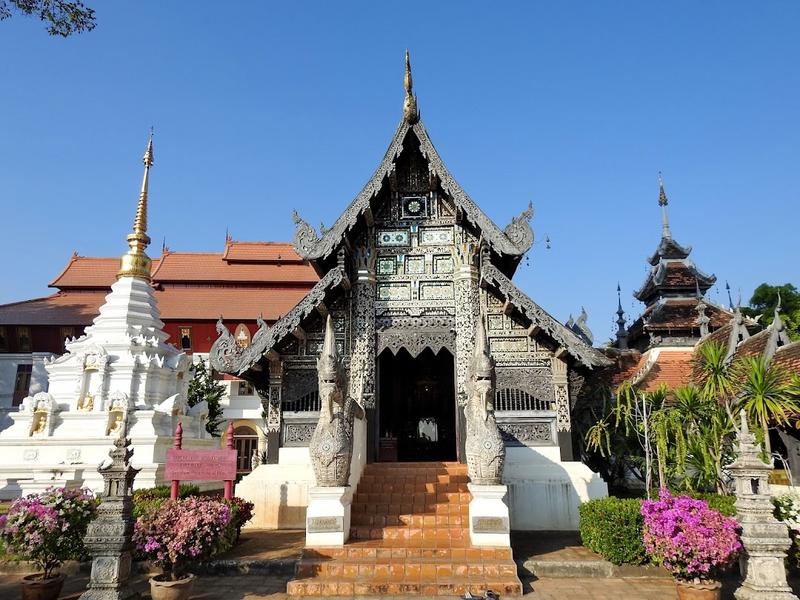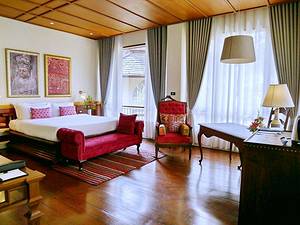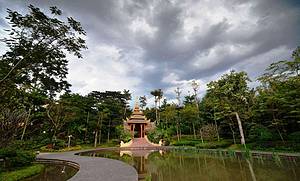Chiang Mai 5-Day Tour: Ancient City Temples Zoo Experience University Campus Surroundings Exploration Shopping Food
1 cities |
14 attraction(s) |
total distance 74
km
 TIPS
TIPS
Day1
Day2
Day3
Day4
Day5
Day1: Chiang Mai
5 attraction(s) ·
4 km
1
One of Thailand's important cultural heritages, the ancient city is in a square shape with a perimeter of approximately 1.5 kilometers, and the city walls and moat are well-preserved. Inside the ancient city, there are numerous traditional temples and pagodas, as well as unique hotels, guesthouses, cafes, and restaurants. There are many city gates in the ancient city, and the East Gate Tapae Gate is well-preserved.
Famous temples in the ancient city include Wat Chedi Luang, Wat Phra Singh, and Wat Chiang Man, most of which can be visited for free, with only a 20 Baht entrance fee for foreigners at Wat Phra Singh.
The ancient city is also the location of the popular Sunday Night Market, which is held on the street near the East Gate Tapae Gate.
1
km
2
Temple complex with a partially crumbled 15th-century chedi & a pillar believed to protect the city.
1
km
3
Wat Phra Singh, built in 1345, is the largest temple in the ancient city of Chiang Mai and one of the must-visit attractions for tourists. The most famous part of the temple is the sacred hall that houses the Phra Singh, a lion-shaped Buddha statue. It is the highest-ranking and largest temple in Chiang Mai, alongside Wat Chedi Luang. The temple has undergone several expansions and renovations to reach its present size. It houses the ashes of King Kaewfa and exquisite wooden carvings and murals. The most impressive feature is the gold-plated Phra Singh Buddha statue, which gives the temple its name. The temple also features a library and collection of traditional art. The outside walls are adorned with large advertisements about Buddhism, and two white mythological creatures stand at the entrance. Inside the temple, traditional music is performed while the temple is lit up with decorations. Across the street from Wat Phra Singh is Wat Pha Bong.
2
km
4
The East Gate of the old city in Chiang Mai is a prominent landmark and the starting point of the Sunday Night Market. It is easy to find and offers an opportunity to interact closely with the locals and experience their joys and sorrows. I also recommend visiting the Warorot Market, where you can join the locals in small transactions and gain a deeper understanding of the authentic life in northern Thailand.
2
km
Day2: Chiang Mai
3 attraction(s) ·
23 km
1
Chiang Mai Zoo was established in 1974 and is located in Chiang Mai, northern Thailand. It was originally a privately owned zoo and became an official zoo on June 16, 1977. The zoo features a monorail and a 133-meter-long aquarium, allowing visitors to observe various animals in an excellent position and experience the animal culture of Thailand.
6
km
2
Simple rooms, some with air conditioning, in a low-key hotel offering a restaurant & a terrace.
18
km
3
Attraction offering elephant shows, elephant painting & experiences such as bathing & riding.
Day3: Chiang Mai
4 attraction(s) ·
4 km
1
Chiang Mai University was founded in 1964 and is the first higher education institution in northern Thailand. Today, it is ranked second in Thailand and is the top university outside of Bangkok. The campus covers an area of 14 square kilometers and has 107 faculties, with over 18,000 students and over 2,000 faculty members. While its overall academic reputation may not match some of the well-known universities in Bangkok, Chiang Mai University is highly regarded for its engineering and medical technology programs, earning a good reputation. Additionally, the campus is located near Doi Suthep Mountain, about 2 kilometers west of the city center, offering a beautiful environment.
2
km
2
Showcasing many contemporary Thai art collections, especially works from emerging Thai designers. Additionally, at the College of Fine Arts at Chiang Mai University, you can appreciate an abundance of art pieces created by students. These works are filled with creativity, although they may not be fully matured, they possess a sense of early-stage development.
2
km
3
Chiang Mai University was founded in 1964 and is the first higher education institution in northern Thailand. Today, it is ranked second in Thailand and is the top university outside of Bangkok. The campus covers an area of 14 square kilometers and has 107 faculties, with over 18,000 students and over 2,000 faculty members. While its overall academic reputation may not match some of the well-known universities in Bangkok, Chiang Mai University is highly regarded for its engineering and medical technology programs, earning a good reputation. Additionally, the campus is located near Doi Suthep Mountain, about 2 kilometers west of the city center, offering a beautiful environment.
4
Chiang Mai University was founded in 1964 and is the first higher education institution in northern Thailand. Today, it is ranked second in Thailand and is the top university outside of Bangkok. The campus covers an area of 14 square kilometers and has 107 faculties, with over 18,000 students and over 2,000 faculty members. While its overall academic reputation may not match some of the well-known universities in Bangkok, Chiang Mai University is highly regarded for its engineering and medical technology programs, earning a good reputation. Additionally, the campus is located near Doi Suthep Mountain, about 2 kilometers west of the city center, offering a beautiful environment.
Day4: Chiang Mai
4 attraction(s) ·
13 km
1
5,499-foot mountain featuring trails through evergreen forests & a picturesque, hilltop temple.
6
km
2
Chiang Mai Zoo was established in 1974 and is located in Chiang Mai, northern Thailand. It was originally a privately owned zoo and became an official zoo on June 16, 1977. The zoo features a monorail and a 133-meter-long aquarium, allowing visitors to observe various animals in an excellent position and experience the animal culture of Thailand.
4
km
3
The museum comprehensively collects and introduces the Lanna art and culture of northern Thailand. The first floor showcases Buddha statues, artworks, and weaponry from the 14th and 15th centuries. The second floor displays daily items and photographs of the various mountainous ethnic groups in northern Thailand, serving as a center for ethnology and education, dedicated to preserving and promoting Lanna culture. The museum received the honor of an opening ceremony attended by King Bhumibol Adulyadej and Queen Sirikit on February 6, 1973. The museum's architecture and facilities have a strong Lanna style, and the spacious interior makes it the best place to learn about Lanna history.
4
km
Day5: Chiang Mai
3 attraction(s) ·
4 km
1
Sprawling, upscale mall features dozens of boutiques, gift shops, eateries & a cinema.
1
km
2
Buzzing road lined with craft coffee shops, boutiques, hip restaurants & cocktail bars.
3
km

































